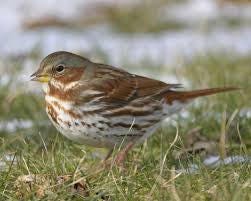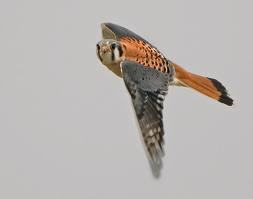May 1-2
My husband and I bring entirely different but complementary skills to birdwatching. He is unsurpassed in spotting movement and equally adept at putting the binoculars on the flitting bird. I’m convinced he was a sniper in a previous life. My skill is pattern recognition. I categorize birds based on their size, stance (flycatchers sit upright on a twig), the shape of their head (flycatchers have rounder heads) and their activity level (warblers flit around, vireos are sluggish). I realize that pattern recognition is threaded throughout my life – as a pathologist looking at cells under a microscope, creating patterns in my hobbies of knitting and quilting, and sensing rhythmic patterns as a carillon bell ringer. Nick’s pattern recognition skills of birds are nonexistent (except for woodpeckers), but he has a freakish ability to distinguish among cars based on their grillwork alone – at night. Beyond that, he can tell me the cost of the car. To me all black sedans look alike and I am surprised at the price differential between the lowly Camry and a fully loaded BMW.
In the birding world pattern recognition is known as “Gizz,” derived from “general impression of size and shape” (i.e. GISS), a WWII military term describing the identification of aircraft based on an innate feel. Modern technology has supplanted the military applications for GISS, but it lives on in birding.
My Gizz skills allow me to pick out something new, which is how I tracked down the Blue Headed Vireo today. This vireo was originally called the Solitary Vireo, but underwent a name change when the birding pooh-bahs split one species into two. I imagine the undercurrents of vicious politics as impassioned birders bargained for their pet name change. Perhaps, “I will vote for your blue head if you vote for my yellow rump.” The name blue headed vireo is only somewhat descriptive, as the head is really more gray than blue. If I were in charge, I’d lobby for one of the wacky color names you see in clothing catalogs. How about, Gun Metal Headed Vireo, or Storm Tossed Marine Headed Vireo.
GIZZ can only give you an initial toehold on birding. I may know for sure that it is a sparrow, but a definitive ID is based on a more detailed analysis of the plumage and the song, a challenging task for sparrows, which look alike and are lumped together as “LBJs” (little brown jobs). While still at the casual end of birding, I feel bound by this honor system. I remember playing solitaire card games as a child, and the overwhelming temptation to bend the rules just a little bit when no one was looking. Years ago, I secretly watched my younger brother playing the basic solitaire game where you have seven cards across and you are trying to play everything up on the aces. Under his breath he said, “On Wednesdays only, you can temporarily have an extra eighth space for a ten.” He then slid the ten over, the game opened up, and he triumphantly announced, “I won!”
The other day I was similarly conflicted. I wasn’t completely sure I claim a flox sparrow which flew off before I could confirm its brown streaking. I thought what the hell, I’ll add it to my list. And while I’m at it, I am fairly sure that other bird was a swamp sparrow. I stand on the edge of the slippery slope of the honor system.
The woods and fields have fallen quiet in this cold weather. I spend my walk looking at the pattern of tree bark. Several years ago, I took a class on identifying trees in winter. Without the distraction of leaves, the identification depends on the GIZZ of tree shape and branching pattern. The bark pattern can be distinctive. I spot the thickly furrowed bark of the burr oak, looking like a comfortable pair of wide wale corduroys, the peeling bark of cherry trees and shagbark, which look like the flakes of sunburned skin, the diamond shaped pattern of ashes, which probably house some exquisitely adapted insects, and finally the cracked bark of the white oak, which quite frankly looks like the pattern on my calloused feet. Perhaps my weight and the weight of the tree have produced the same fault lines in their supporting structures.
Bird banding at nearby Shaw Prairie started this week, so for the moment I have abandoned my usual route. Thirteen mist nets are set up in the morning, and every hour, the team of volunteers checks the nets, extracts the birds that have gotten tangled in the nets as they fly by, puts the birds in a muslin bag, and then returns to the central station where the birds are weighed, measured, banded and then released. The banding information is submitted to a national database to gather information on migration patterns. One year I flew down to the farthest outpost in the Florida Keys to witness the beginning of the spring migration. Exhausted birds winging their way across the Caribbean somehow spotted this tiny island from above and dropped down to rest and recoup. The numbers of birds dripping from trees and staggering around on the ground were overwhelming. After a two day stay, I comfortably flew back home trailing an indulgent carbon footprint. Three weeks later the same birds showed up in my backyard on their own power.
May 4th
I again stand at the precipice of the slippery slope of the honor system, as I must decide whether birds identified only through netting can count on my life list. This strikes me a little bit like going to the zoo instead of Africa so I dig in my heels and stand firm. This means that the Sharp Shinned Hawk, which had the misfortune of being netted twice, and with whom I exchanged meaningful glances, is not yet on my life list. However, other raptors seem to abound today. There are several red-tailed hawks and kestrels gliding over the fields. The sun just catches the kestrel and his blue wings and red tail are perfect.
To be continued….












Who knew birding was so rife with ethical challenges?